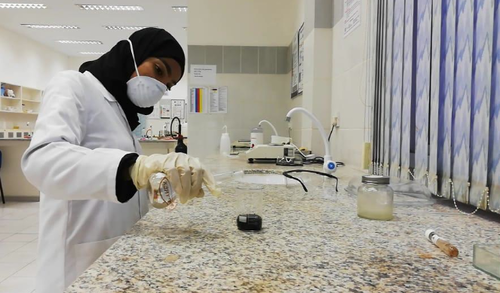
Muscat Daily
MUSCAT - Tyres are among the most problematic sources of waste because they are durable, non-biodegradable and can take up valuable space in landfills. It was this problem that prompted a student of Caledonian College of Engineering (CCE) to come up with a novel way of using discarded tyres in the construction sector. Fatma Sulaiman Nasser al Kindi, a chemical engineering student at CCE, said that discarded rubber tyres are an environmental hazard worldwide.
“I was thinking on how to make the best use of discarded tyres. I have noticed such tyres being dumped in open areas leading to pollution in the environment. I embarked on the project of recycling tyre waste particles into concrete aggregate by acid treatment and activation process,” Fatma told Muscat Daily .
Fatma said that the project is considered as an alternative to the natural aggregates used as filler in concrete. “Waste tyres will be converted into small pieces and mixed with concrete mixture for construction work as well as providing raw material to different industries.”
According to Be’ah, 45,000 tonnes of ‘end-of-life’ tyres are generated every year in the sultanate - a figure that is projected to rise in line with population growth and urbanisation. For want of environmentally safe ways of disposing of this waste, these tyres have been piling up at two major dumpsites. The biggest one is in Dhofar.
In an effort to improve the durability and resilience of concrete, researchers have attempted to use recycled rubber within concrete mixes. The result of this has been positive as it has extended the lifespan of concrete structures, roads and bridges.
Fatma said rubber tyres act as a binding agent. “The biggest benefit is that it reduces the possibility of development of cracks in concrete structures, roads or bridges. It helps to strengthen the quality of a structure.”
Fatma said her method was environment-friendly. “I am using acid treatment to melt the tyres instead of burning them. This prevents any chemical reaction that may result due to their burning in the presence of water vapour and sunlight.”